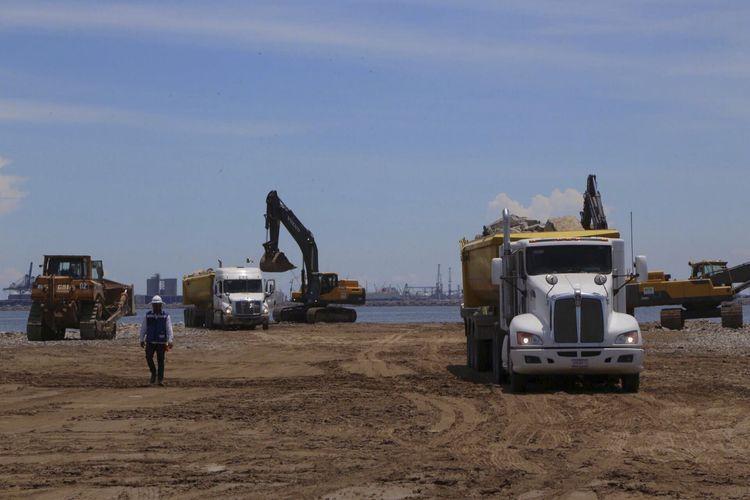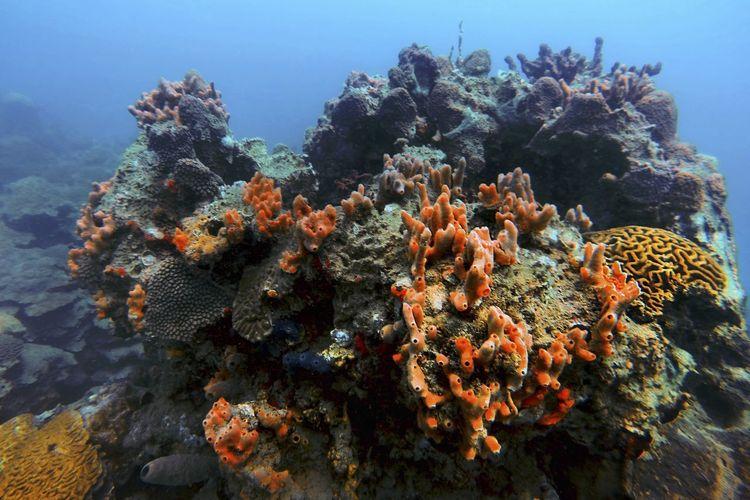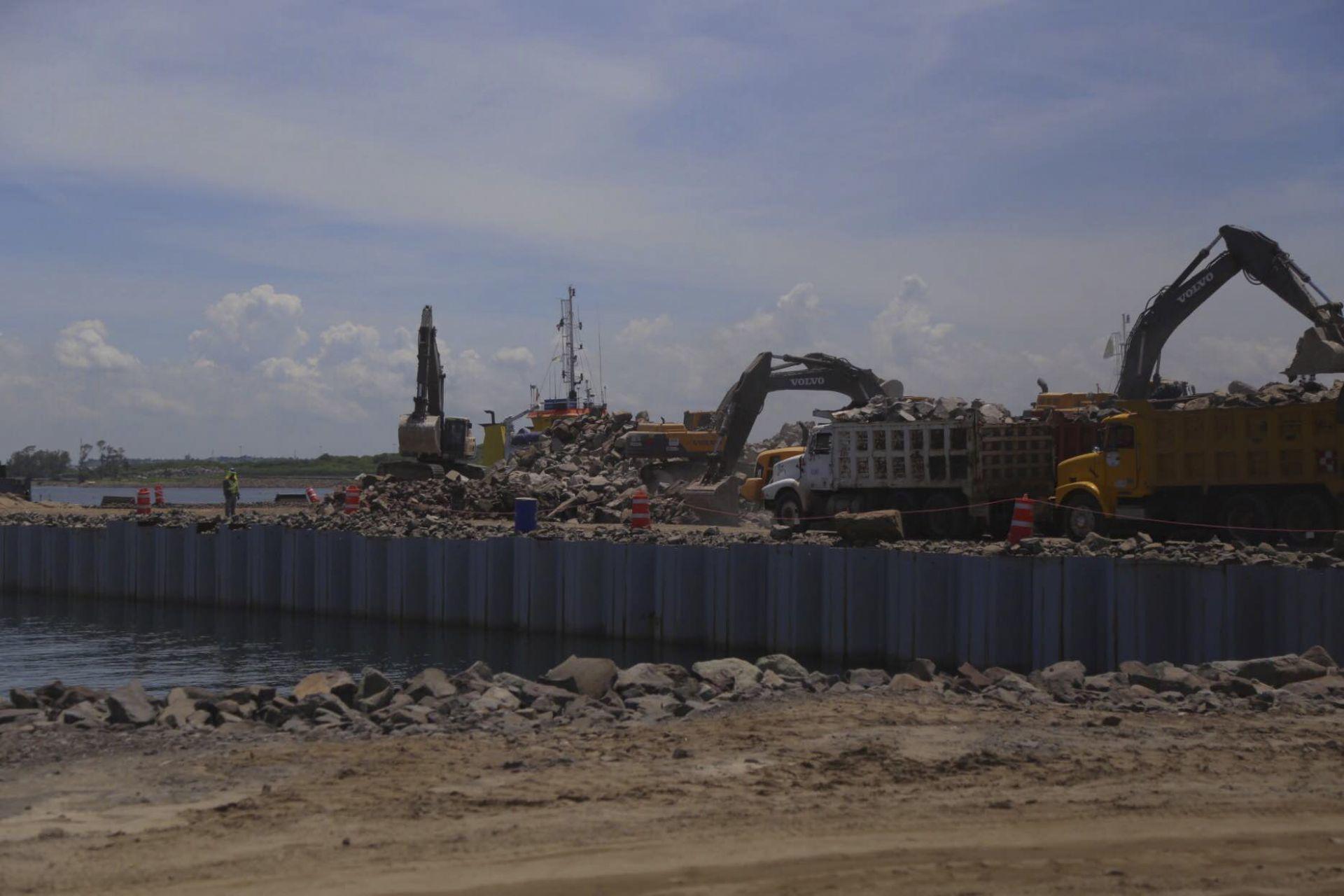The Ministry of Environment and Natural Resources (Semarnat) will have to carry out the environmental impact assessment again for the expansion of the Port of Veracruz, after the Supreme Court of Justice of the Nation (SCJN) granted an amparo to stop construction works.
“This First Chamber concludes that in the resolutions requested, the authorities responsible for Semarnat carried out a poor evaluation of the environmental impact manifestation, since they did not comprehensively analyze the expansion project of the Port of Veracruz, which constitutes a violation of the principles of prevention and precaution that govern environmental matters,” said the SCJN on February 9.
For organizations, specialists and citizens involved in defense since the last six years, this is environmental justice news. Not only because stopping works guarantees environmental protection, but the case showed that in Mexico authorizations are granted to megaprojects in a fragmented manner.
They are also known as ant invasion and occur in places such as Cabo Pulmo, in Baja California Sur, or the tourist area of the Yucatan Peninsula, where real estate companies apply separately for different construction permits that, together, build the tourism project.
This is problematic because it makes it impossible to identify the environmental impact that the entire project will have.
“In this case, the Court in its judgment calls on Semarnat to redraft the environmental impact assessment and review what mitigation measures should be applied. You can even assess that it's not feasible,” said Sandra Moguel, a lawyer with the Inter-American Association for Environmental Defense (AIDA).
Moguel is one of those legally responsible for accompanying the case of the expansion in the Port of Veracruz. In an interview with Journalism Causa Natura, he shared that he celebrates the news, but believes that the SCJN resolution is just the beginning of a process so that Semarnat can reevaluate and repair the damage caused by the works already carried out.

A tour of authorities in 2016 for the supervision of the breakwater that would form part of the expansion of the Port. Photo: Ilse Huesca/Cuartoscura
The New Port of Veracruz project has been promoted by the authorities since 2013 with a view to becoming one of the largest commercial ports in Latin America.
70 billion pesos were considered for investment, of which 60% belong to private initiative and 40% to public initiative, according to Semarnat.
Construction began in 2016 affecting the reef area in Punta Gorda and Bahía Vergara, which belong to the Veracruz Reef System National Park, declared a Protected Natural Area since 1992 and a Ramsar site of international importance in 2004.
The authorities' justification for starting work was based on the modifications to the boundaries of the National Park carried out by the National Commission for Protected Natural Areas (Conanp).
It was first argued that part of the reef was already deteriorated, but later it was reported that there were more than 48,000 coral colonies in the work area that would be relocated.
In addition, they built a breakwater, which are usually made with cement, stone or concrete blocks from the seabed to control the waves. The work caused around 71,000 square meters of the reef to be covered, causing irreversible damage, according to information documented by the Mexican Center for Environmental Law (CEMDA).
The Court's decision is also an opportunity to highlight the irregularities that occur in environmental impact assessments, Moguel said.
These evaluations are an X-ray of the repercussions that a construction project will have on the ecosystem and, therefore, on the community. For Semarnat to be able to carry them out, it is necessary for companies or individuals promoting a project to carry out Environmental Impact Demonstrations (MIAs), which are technical documents containing construction specifications and their effects on the environment.
For the New Port of Veracruz, at least 14 MIAs were approved for different road works, dredging and breakwaters, which in their entirety make up the expansion project.
“An important aspect of this ruling is that it makes a call, particularly to Semarnat, which is the evaluator of the projects... It knows that fragmented projects are being presented to it and yet it approves them,” said Moguel.
Some of the causes of these flaws, he believes, are the lack of corroboration on the part of Semarnat regarding the information presented in the MIAs; the treatment of evaluations as a bureaucratic process, and the environmental consultancies that carry out MIAs following the interests of their clients.

Veracruz Reef System. Photo: Félix Márquez/Cuartoscura
A precedent and greater participation
The Veracruz Reef System is the largest coral ecosystem in the Gulf of Mexico. It helps to reduce impacts to the coast due to storms, hurricanes and waves; it is home to endangered species such as elk horns and sea turtles and, at the same time, it produces oxygen and captures carbon dioxide (CO2).
The request for amparo that reached the SCJN came from two inhabitants of the Port of Veracruz who, in defense of reefs and the right to a healthy environment, filed a complaint against the authorization granted by Semarnat to carry out the extension.
But the Fifth District Court in the Seventh Circuit ruled that the complainants had no legitimate interest, were not affected or benefited in any way by expanding the port, despite living in the city. So they decided to take the case to a Collegiate Circuit Court, where the Court appealed to him and, when it was voted unanimously, created a mandatory precedent.
As analyzed by the SCJN, the authorities violated the human right to a healthy environment by verifying in a fragmented manner the environmental impacts of the expansion works of the Port of Veracruz.
“This is very important because it opens the way for anyone from a neighborhood or from a municipal neighborhood to an ecosystem (in Mexico) who is going to be affected by a project to report that they are being affected in their environmental sphere,” said lawyer Moguel.
“And something that I don't think has been said much is that by expanding legitimate interest, you can also remove that burden of harassment that has been given in Mexico to environmental and human rights defenders and also to journalists,” he said.
In addition, in accordance with the Court's decision, the authorities must take other measures such as a request to the National Wetlands Committee, an advisory body of various government bodies, for the appointment of an international expert to help define a protection scheme.
There is still no estimate of how long it will take for Semarnat, in coordination with Conanp, to complete the evaluations. There are procedures, such as filling out the sentence with the ministers' signature, that can take up to three months.



Comentarios (0)